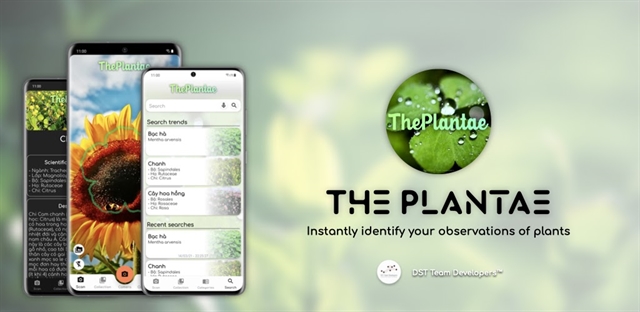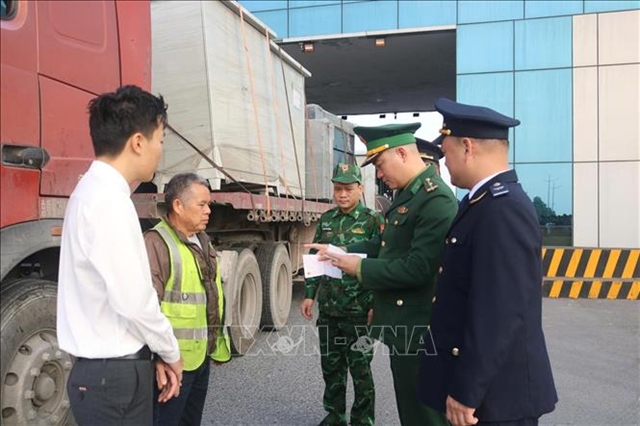 Society
Society

Two 17-year-old students in the south-central province of Khánh Hòa have invented a plant identification app.

|
| Trang Sĩ Thái (right) and Nguyễn Trần Thanh Ngân (left) at the national scientific research contest hosted by the Ministry of Education and Training in March. Photos courtesy of Trang Sĩ Thái |
KHÁNH HÒA — Two 17-year-old students in the south-central province of Khánh Hòa have invented a plant identification app.
Under the guidance of teachers at Lý Tự Trọng High school in Nha Trang City, Trang Sĩ Thái and Nguyễn Trần Thanh Ngân, began researching plant recognition apps on the market in May last year.
They analysed advantages and weaknesses of those apps and improved some features to have a better product.
‘The Plantae’ app identifies plants through images captured on the cameras. The images, after being processed to improve quality, will be sent to a system to identify the plants. If the images are the same as pictures saved on the system, the plant is recognised and information about it will be sent to app users.
The app creators, said, “We wanted to bring an easy, convenient and time-saving approach to information about plant. We also hope our friends who are students have more knowledge of the plants around us.”
The app is now active on Android. Feedback on those platforms have helped the students improve the app’s quality.

|
| ‘The Plantae’ app. |
The app now has 8,000 installations from 167 countries and territories and is able to identify more than 12,000 types of plants and herbs.
“From the very first software we invented, the app has now been upgraded with more features, helping it run more smoothly and accurately,” they said.
The app received the third prize in the national scientific research contest hosted by the Ministry of Education and Training in March.
Thái and Ngân still want to improve the app by increasing the number of plants it can identify. The two often spend free time improving the product, hoping to update more useful and important plant information, especially treatment methods using herbs and promote the ‘sharing’ feature so that users can share plant information to others.
“We will continue to research and improve their recognition algorithm to improve accuracy as well as recognition processing speed, making the results most accurate,” they said.
In the future, they hope that through image scanning, users can know the plant’s state of health, nutrition level and get instructions to better take care of plants. — VNS




